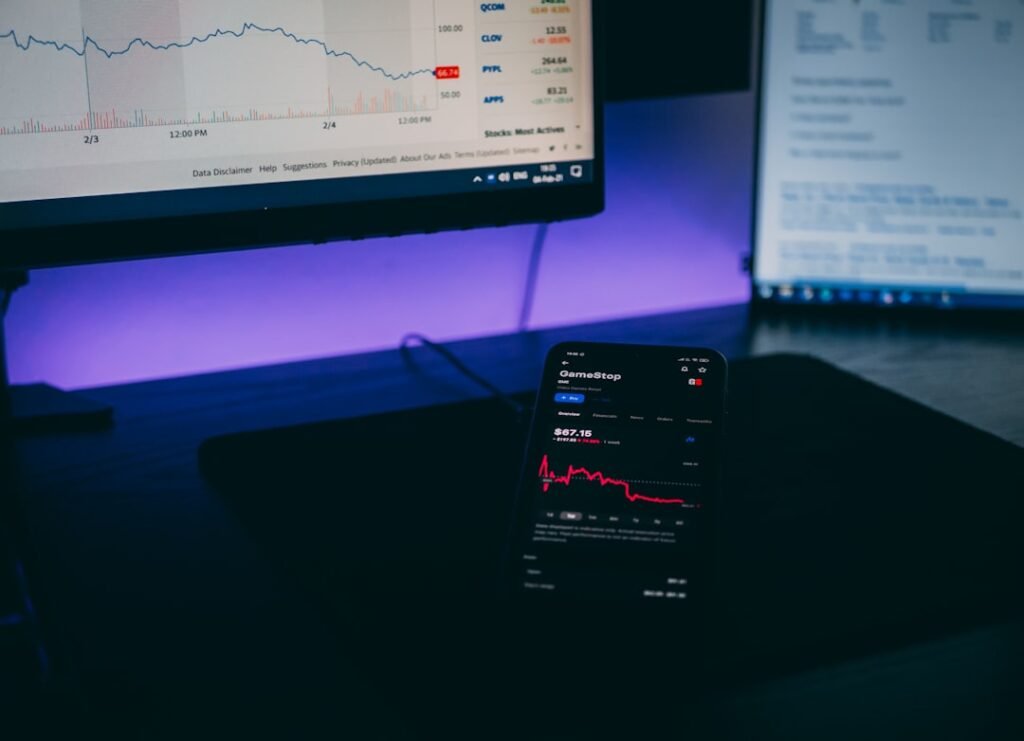Crypto Volatility Decoded: Navigating the Rollercoaster Between Risk and Reward
The cryptocurrency market doesn't just experience volatility; it defines it. Data from CoinMetrics reveals a stark reality: Bitcoin, the market's flagship asset, has swung by over 10% in a single day more than 100 times in the past decade. This dwarfs the fluctuations seen in traditional finance. While the S&P 500 index typically shows average daily volatility around 1%, Bitcoin routinely clocks in at 3-5%, according to Cointelegraph. This inherent dynamism, where prices can skyrocket or plummet with breathtaking speed, presents a unique landscape. Is this volatility a perilous trap or a gateway to unprecedented opportunity? Understanding its nature, drivers, and how to navigate it is paramount for anyone venturing into the crypto sphere.
What Exactly is Volatility (and Why Does Crypto Excel at It)?
At its core, volatility measures the degree of variation in an asset's price over time. It quantifies how wildly and rapidly prices fluctuate. In crypto, volatility isn't an occasional guest; it's a permanent resident. Prices can experience dramatic shifts within hours or even minutes. While traditional markets like stocks or bonds also see ups and downs, crypto volatility operates on a different scale, fueled by a potent cocktail of unique factors:
-
Speculative Trading Frenzy: Unlike established assets often anchored by fundamentals like earnings or dividends, many cryptocurrencies lack intrinsic value in the traditional sense. This vacuum is filled by sentiment and hype. Emotions like FOMO (Fear Of Missing Out) and FUD (Fear, Uncertainty, Doubt) become powerful price drivers. Speculators jump in hoping to catch the next big wave, often amplifying price movements far beyond what underlying developments might justify. A single viral tweet or influencer endorsement can trigger massive buying or selling sprees.
-
The Regulatory Rollercoaster: The global regulatory landscape for cryptocurrencies remains fragmented and uncertain. Governments and financial authorities worldwide are still grappling with how to classify, regulate, and tax digital assets. News of a potential ban, a major enforcement action, or conversely, clear regulatory acceptance or favorable legislation, can send shockwaves through the market. This pervasive regulatory uncertainty adds a constant layer of unpredictability, directly impacting investor confidence and price stability. The dramatic impact of the SEC's lawsuit against Ripple (XRP), which wiped out billions in market value almost overnight, is a stark example.
-
Technological Turbulence: Crypto is fundamentally a technology-driven asset class. Updates to blockchain protocols, the discovery of critical security vulnerabilities, successful hacks, or the launch of innovative new projects and platforms can drastically alter perceived value. Positive news like a successful major upgrade (e.g., Ethereum's Merge) or a high-profile partnership can send prices soaring. Conversely, news of exploits, delays in key developments, or failed projects can trigger panic selling and steep declines. The market is highly reactive to the constant evolution within its own ecosystem.
-
Market Sentiment & The Media Amplifier: Crypto markets are exceptionally sensitive to narratives. News outlets, social media platforms (especially Twitter, Reddit, Telegram), and online forums act as powerful echo chambers, rapidly amplifying both euphoria and panic. Positive stories about institutional adoption, technological breakthroughs, or mainstream acceptance can fuel buying frenzies. Negative headlines about exchange hacks, regulatory crackdowns, or market manipulation allegations can spark equally rapid sell-offs. The 24/7 nature of crypto news and social media ensures information (and misinformation) spreads instantly, exacerbating price swings.
-
The Whale Effect & Market Manipulation: The crypto market, despite its growth, still has relatively low liquidity compared to massive traditional markets like forex or equities. This makes it susceptible to the actions of "whales" – individuals or entities holding vast quantities of a particular cryptocurrency. A single large buy or sell order from a whale can significantly move the price, especially for smaller market cap altcoins. Furthermore, the decentralized and less regulated environment, while a core tenet for many, creates fertile ground for manipulative practices like "pump and dump" schemes, where prices are artificially inflated before being crashed for profit.
-
The Growing Pains of an Immature Market: Crypto is an adolescent asset class. Bitcoin is only 15 years old; most other cryptocurrencies are far younger. Markets are still in the crucial phase of price discovery, where consensus on the "fair value" of these novel assets is constantly being tested and revised. Liquidity is fragmented across numerous exchanges globally, making it harder for large players to enter or exit positions without causing significant price impact. Financial products for sophisticated risk management (like mature derivatives markets) are still developing. This immaturity naturally contributes to higher volatility as the market structure evolves.
-
24/7 Trading & No Circuit Breakers: Unlike traditional stock markets that operate within set hours (e.g., 9:30 AM to 4:00 PM EST for the NYSE), cryptocurrency markets never close. Trading happens around the clock, every day of the year. Crucially, there are no mandated "circuit breakers" – mechanisms used in traditional markets to temporarily halt trading during periods of extreme volatility to prevent panic selling. This constant, unbroken trading, free from these stabilizing mechanisms, allows momentum to build unchecked, often leading to more pronounced swings.
Volatility: A Double-Edged Sword for Investors
This inherent volatility is neither inherently good nor bad; it's a defining characteristic that presents distinct implications:
-
The Opportunity (The Reward): Extreme price movements create the potential for substantial profits in remarkably short timeframes. Astute traders thrive on volatility, employing strategies to capitalize on rapid price differentials – buying perceived dips and selling into rallies. For long-term believers, significant pullbacks can present strategic buying opportunities to accumulate assets at lower prices. The historical performance of assets like Bitcoin, recovering from multiple 50%+ corrections to reach new all-time highs, demonstrates this potential upside for patient investors.
-
The Risk (The Peril): The flip side is equally potent. Prices can collapse just as quickly as they rise. Volatility dramatically amplifies the risk of significant capital loss, especially for those using leverage or investing in highly speculative assets. The constant fluctuations can induce significant stress and anxiety, making it challenging to adhere to a disciplined strategy. Crucially, the high failure rate within the crypto space (over 14,000 cryptocurrencies listed on CoinGecko have failed) underscores that volatility often leads to permanent loss, not just temporary drawdowns, for many projects. The infamous "Covid Crash" of March 2020, where Bitcoin lost ~50% in a single day, exemplifies the speed and severity of potential downturns.
Navigating the Storm: Strategies for Crypto Investors
Thriving in the volatile crypto market requires more than luck; it demands strategy, discipline, and robust risk management:
- Diversification is Key: Avoid putting all your eggs in one basket. Spread investments across different cryptocurrencies (e.g., Bitcoin, Ethereum, established altcoins) and potentially other asset classes. Diversification helps mitigate the impact of a catastrophic drop in any single asset. However, thorough research on each asset is essential – diversifying into poorly researched projects simply spreads risk differently, not reduces it effectively.
- Ruthless Risk Management: This is non-negotiable.
- Only Risk What You Can Afford to Lose: Treat crypto investments as high-risk capital. Never invest money needed for essentials or short-term goals.
- Utilize Stop-Loss Orders: Automate protection by setting orders to sell an asset if it falls below a predetermined price level, limiting potential losses.
- Position Sizing: Allocate only a small percentage of your total capital to any single trade or investment. This prevents any one bad decision from decimating your portfolio.
- Beware of Leverage: While tempting for magnifying gains, leverage exponentially increases risk and the potential for rapid, total loss (liquidation). Use extreme caution.
- Dollar-Cost Averaging (DCA): Instead of trying to time the market (a notoriously difficult feat), invest a fixed amount of money at regular intervals (e.g., weekly or monthly). This strategy averages out the purchase price over time, reducing the impact of volatility and removing the emotional burden of deciding when to buy. It's particularly suitable for long-term investors focused on accumulation.
- Prioritize Fundamentals (Especially for Long-Term Holds): While short-term noise and sentiment dominate headlines, focus on the underlying fundamentals for assets you plan to hold long-term. Research the project's technology, team, real-world use case, tokenomics (supply, distribution), adoption rate, and community strength. Investing in projects with solid fundamentals increases the odds of weathering volatility and achieving sustainable growth.
- Stay Informed, But Avoid the Noise: Continuously educate yourself about the technology, market trends, and regulatory developments. Follow reputable news sources and analysts. However, avoid getting swept up in the 24/7 hype and FOMO/FUD cycles on social media. Learn to filter signal from noise. Base decisions on research and strategy, not impulsive reactions to headlines or price spikes.
- Embrace Discipline and Emotional Control: Volatility tests psychology. Fear, greed, and FOMO are powerful forces that lead to impulsive decisions – buying high out of excitement or panic selling low. Develop a clear investment plan outlining your goals, risk tolerance, entry/exit strategies, and asset allocation. Stick to this plan religiously, especially when emotions run high. Patience and a long-term perspective are vital allies.
The Future: Maturing Markets, Muted Volatility?
As the cryptocurrency market matures, several trends suggest volatility may gradually decrease, though likely remaining higher than traditional assets:
- Increased Institutional Participation: The approval of Bitcoin and Ethereum Spot ETFs marks a significant milestone, funneling substantial institutional capital into the market. Institutions typically bring larger pools of capital, longer investment horizons, and sophisticated risk management, potentially dampening extreme swings.
- Regulatory Clarity (Eventually): While the path is rocky, evolving regulatory frameworks globally will provide more certainty. Clearer rules reduce regulatory risk, a major source of uncertainty and volatility. This process will take time but is crucial for mainstream adoption and stability.
- Market Infrastructure Development: The growth of deeper, more liquid markets across exchanges, alongside the maturation of derivatives and other financial products, provides better tools for risk management and absorbs larger trades with less price impact.
- Continued Price Discovery: As the asset class ages and adoption widens, consensus on valuations may become more stable, moving beyond the extreme speculation phase. Bitcoin's own volatility has demonstrably trended downwards as its market cap has grown.
The Bottom Line: Volatility is the Price of Admission
Cryptocurrency volatility is not a bug; it's a fundamental feature of a nascent, rapidly evolving, technology-driven, and sentiment-sensitive asset class. It presents a unique dichotomy: the potential for extraordinary gains exists alongside the very real risk of devastating losses. This volatility stems from a complex interplay of speculation, regulatory flux, technological innovation, market sentiment, structural immaturity, and the absence of traditional market safeguards.
For investors, acknowledging and respecting this volatility is the first step. Success hinges not on predicting every swing, but on implementing a disciplined strategy centered on diversification, rigorous risk management (especially position sizing and stop-losses), continuous education, and unwavering emotional control. Dollar-cost averaging offers a powerful tool to mitigate timing risk for long-term holders, while a focus on fundamentals provides a compass through the noise.
While the crypto market's wild price swings may moderate over time as institutional capital flows in and regulatory frameworks solidify, volatility will likely remain a defining characteristic compared to traditional assets. Viewing it not merely as a hazard, but as an inherent aspect of the crypto landscape – one that demands careful navigation but also creates unique opportunities – is crucial. In the high-stakes world of cryptocurrency, volatility is the price of admission; understanding and strategically managing it is the key to potentially unlocking its rewards while safeguarding against its inherent risks.












